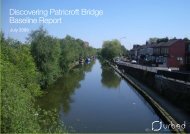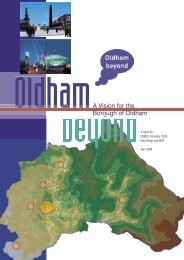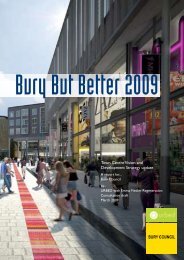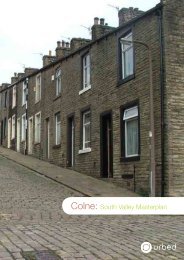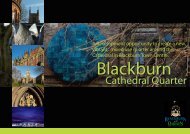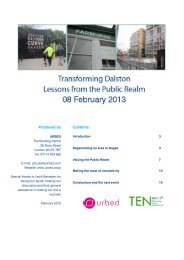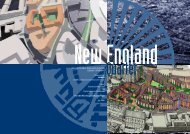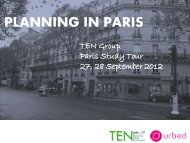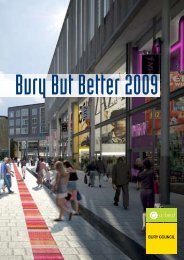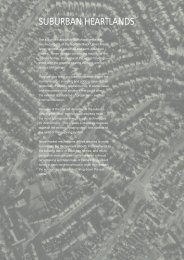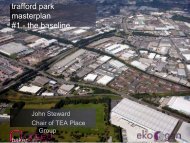URBAN DESIGN FRAMEWORK The University of Liverpool - Urbed
URBAN DESIGN FRAMEWORK The University of Liverpool - Urbed
URBAN DESIGN FRAMEWORK The University of Liverpool - Urbed
Create successful ePaper yourself
Turn your PDF publications into a flip-book with our unique Google optimized e-Paper software.
<strong>The</strong> Mathematics Building by Bryan Westwood, 1959<strong>The</strong> former Royal Infirmary by Alfred Waterhouse in 1890 <strong>The</strong> new Bio-science building completed in 20041:1 - Introduction<strong>The</strong> aim <strong>of</strong> this study is to assist development <strong>of</strong> an estate strategy for the<strong>University</strong> <strong>of</strong> <strong>Liverpool</strong> that can guide future investment decisions and betterintegrate the <strong>University</strong> with its surrounding context.In recent years <strong>Liverpool</strong>, along with the othercore English cities, has embarked on a dynamicperiod <strong>of</strong> investment and resurgence, <strong>of</strong>tencharacterised as the ‘urban renaissance’. Thishas been driven in no small part by the majoreducational and learning institutions, that haveallowed these cities to attract students, staffand significant investment. Universities havebecome major economic generators spinning<strong>of</strong>f businesses and attracting investment forresearch and development. <strong>The</strong>y have also addedto the vitality and cultural diversity <strong>of</strong> citiesmaking them much more interesting and excitingplaces.In turn the big metropolitan universities havebenefited from the transformed image and newfound pulling power <strong>of</strong> their host cities. Studentswant to study in exciting cities and universitiesin the big cities have found it easier to attractstudents and also to retain them after graduation.With its location at the very heart <strong>of</strong> Merseyside’smetropolitan city-region, the <strong>University</strong> <strong>of</strong><strong>Liverpool</strong>’s campus should be perfectly positionedto both benefit from and contribute to thisrenewed civic energy.Unfortunately, with some notable exceptions,the buildings and spaces <strong>of</strong> the campus do notat present rise to this challenge. <strong>The</strong>y neitherprovide a fitting setting for the <strong>University</strong>’s worldclassacademic status nor do they integratethe life <strong>of</strong> the <strong>University</strong> with the life <strong>of</strong> the city.This, we believe, is because <strong>of</strong> a confusion inthe approach to the planning <strong>of</strong> the <strong>University</strong> inthe past, that has alternated between trying tocreate a ‘campus’ environment and seeking todeveloping an ‘Urban’ <strong>University</strong> and done neithervery well.<strong>The</strong> Estates Strategy being undertaken bythe <strong>University</strong> to direct a multi-million poundtransformation <strong>of</strong> the campus is a goodopportunity to address these issues. <strong>The</strong><strong>University</strong> has commissioned URBED (Urbanism,Environment, Design) to develop a newmasterplan for the <strong>University</strong>. This documentis the result <strong>of</strong> this commission and includesa detailed analysis <strong>of</strong> the physical fabric <strong>of</strong> the<strong>University</strong> and its property requirements. This isdeveloped into a three dimensional vision for the<strong>University</strong> and a phased programme <strong>of</strong> works toachieve this.<strong>The</strong> <strong>University</strong> Sports Centre, one <strong>of</strong> the best modern <strong>University</strong> buildings - designed in 1963 by Sir Dennys Lasdun




